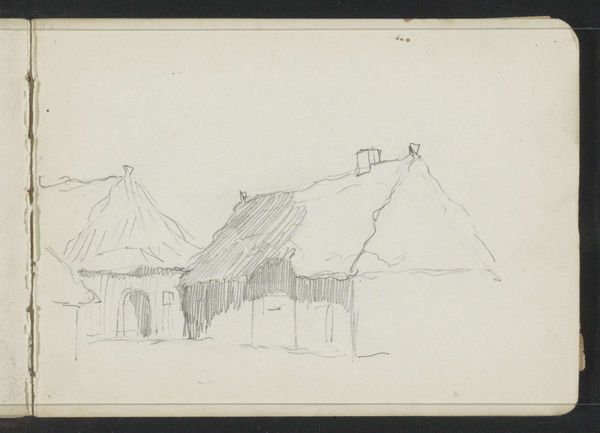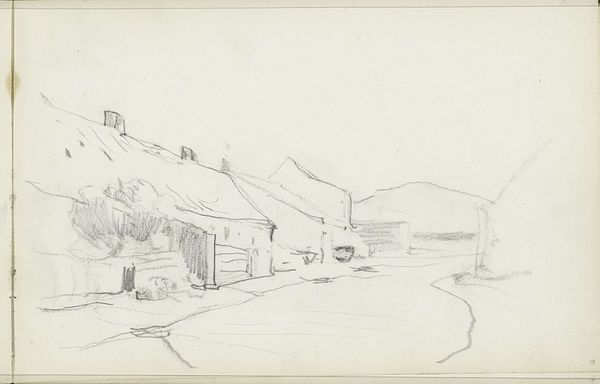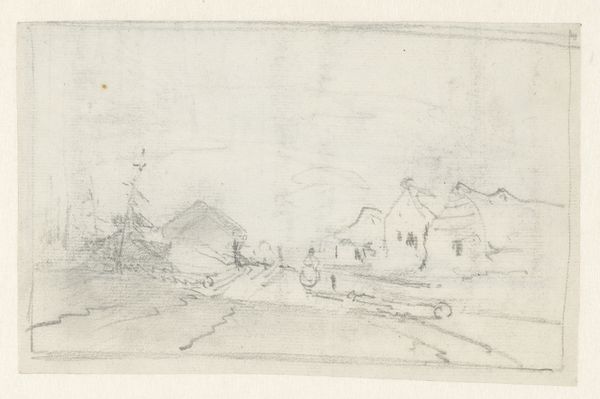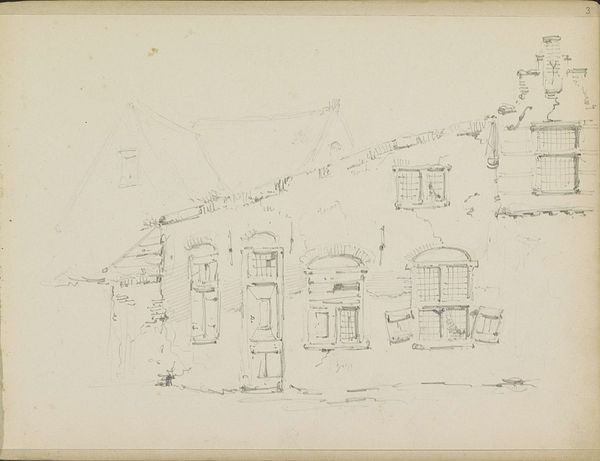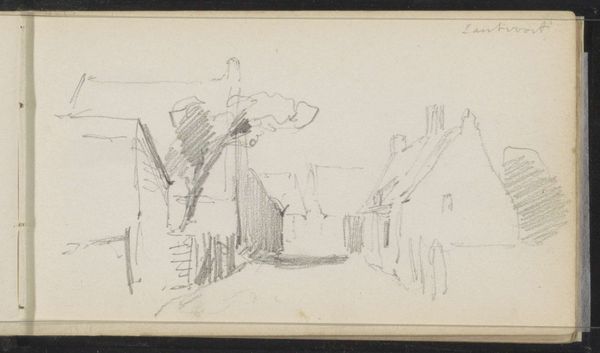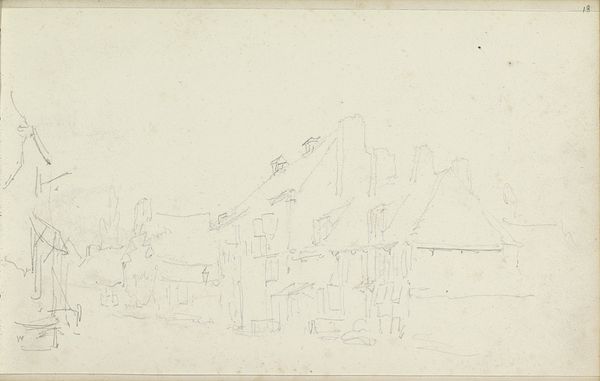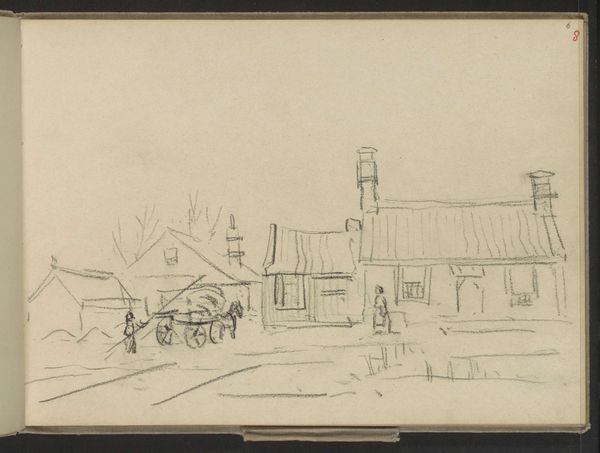
Copyright: Rijks Museum: Open Domain
Curator: We’re looking at "Man op het erf van een boerderij," or "Man in the yard of a farm," a pencil drawing by Johanna van de Kamer, created sometime between 1883 and 1922. Editor: My first impression is quiet melancholy. It's sparse, almost unfinished, yet evokes a strong sense of rural life, maybe tinged with a certain isolation. Curator: The beauty of the drawing, to me, lies precisely in its simplicity. Note how Van de Kamer captures form with just a few, precisely placed lines. Look at the roofline of the main house and the minimal details which describe its structure. The artist very successfully defines the relationships between shapes within the drawing through their subtle variations in line weight and placement on the page. Editor: But those sparse lines also speak volumes about rural labor. Consider that lone figure standing near the farmhouse; his posture might reflect the burdens and societal role of manual workers, confined to the land by a rigid class structure of the time. How might this farm have factored into Dutch colonial ambitions and industrial shifts of that period? Curator: Interesting to introduce class into it, as this sort of straightforward depiction is exactly the approach that allows us to access pure, undistilled Realism. No emotional drama, but unembellished clarity in terms of form and arrangement. The medium of pencil emphasizes its essential quality; in monochrome the artist highlights texture and light using only line and shadow, creating a delicate contrast within the composition. Editor: Precisely, a muted monochrome aesthetic can invite the viewer to confront not only visual but also socioeconomic realities. What did access to resources such as material itself mean during the industrial period for the middle-class artist compared to that man represented as working the farm? Does this artwork invite societal contemplation, if inadvertently? Curator: I feel the real genius here is Van de Kamer’s approach in her visual assessment: extracting the fundamental qualities of her subject. It’s like she's distilled the Dutch landscape down to its most rudimentary visual components. Editor: And perhaps simultaneously, a distilled snapshot of a particular time, revealing complexities woven into simple lines and pastoral settings, connecting land, labor, and societal narrative.
Comments
No comments
Be the first to comment and join the conversation on the ultimate creative platform.

